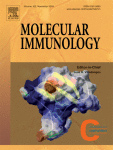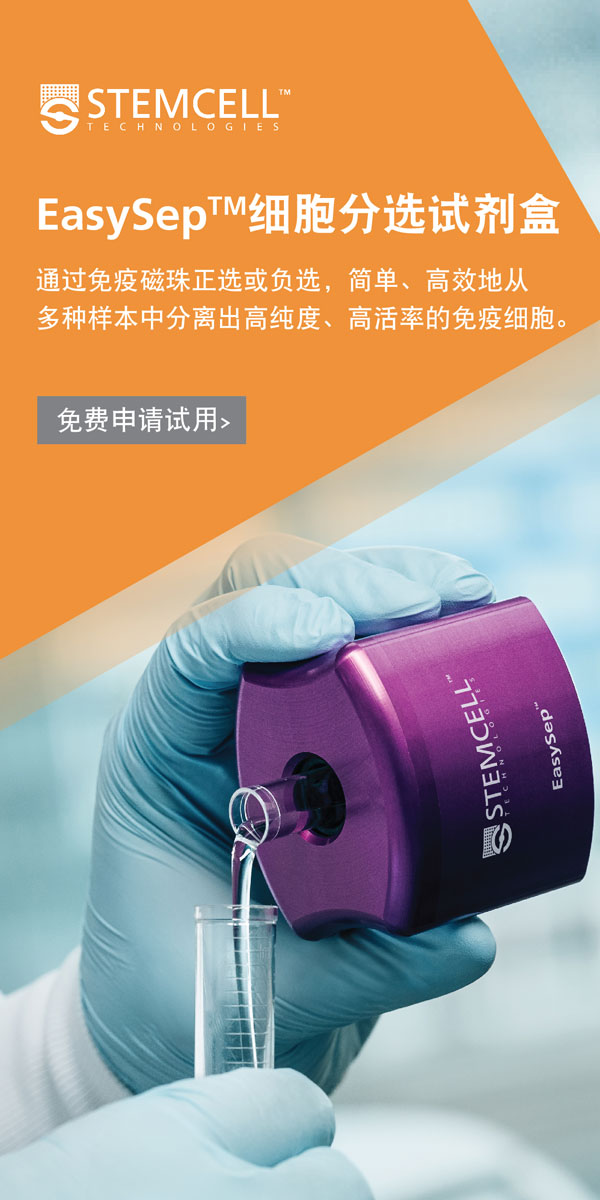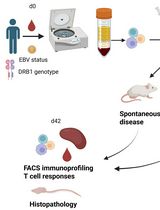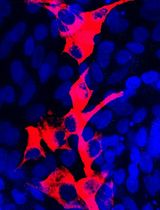- EN - English
- CN - 中文
Detection of Antigen-specific T cells in Spleens of Vaccinated Mice Applying 3[H]-Thymidine Incorporation Assay and Luminex Multiple Cytokine Analysis Technology
利用3[H]-胸苷掺入分析和Luminex多重细胞因子分析技术检测免疫小鼠脾脏中抗原特异性T细胞
发布: 2019年06月05日第9卷第11期 DOI: 10.21769/BioProtoc.3252 浏览次数: 11942
评审: Alexandros AlexandratosWoojong LeeMichela Perego

相关实验方案
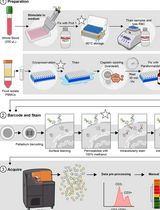
用于比较人冷冻保存 PBMC 与全血中 JAK/STAT 信号通路的双磷酸化 CyTOF 流程
Ilyssa E. Ramos [...] James M. Cherry
2025年11月20日 2137 阅读
Abstract
For many infectious diseases T cells are an important part of naturally acquired protective immune responses, and inducing these by vaccination has been the aim of much research. Here, we describe a protocol for the analysis of vaccine-induced antigen-specific immune responses. For this purpose, cells of whole spleens obtained from vaccinated BALB/c mice were ex vivo stimulated with the antigen incorporated in the vaccine. Evaluation and characterization of vaccine-induced adaptive T cell responses was performed by assaying spleen cell proliferation through radioactive 3[H]-thymidine incorporation and multiplex cytokine analysis of IL-2, IFN-γ and TNFα in supernatants from spleen cell suspensions. This protocol can be very useful as a starting point for assessing vaccine-induced memory T cell populations in pre-clinical studies.
Keywords: Splenocyte cultures (脾细胞培养)Background
T cells have an essential role in protection against a variety of infections by controlling or delaying the onset of disease. Thus, vaccine development for these infections is focused on generating protective T-cell responses (Seder and Hill, 2000). Therefore, selecting T-cell readouts to measure in pre-clinical vaccines studies to assess immunogenicity would aid progress on T cell vaccines. Ideally, a T cell–vaccine would induce long-lived memory T cells, characterized as central memory (TCM) within lymphoid tissues, i.e., lymph nodes and spleen, and effector memory (TEM) within peripheral tissues. Memory T cells when encounter the previously given antigen via vaccination they are clonally expanded in order to differentiate into effector cells. A key mechanism by which T cells mediate their effector function is through the simultaneous production of IFN-γ, TNFα and IL-2 (Darrah et al., 2007). IFN-γ synergize with TNFα to promote killing of pathogens through activation of macrophages, whereas IL-2 strongly enhances the expansion of T cells leading to more efficient effector responses. Therefore, among the most common ways to assess the existence of vaccine-induced cell effector populations is to measure spleen cell proliferation and IL-2, TNFα and IFN-γ production upon ex vivo stimulation with the antigens that have been incorporated in the vaccine (Seder et al., 2008). Cell proliferation encompasses DNA synthesis, mitosis and an increase in cell number. The 3[H]-thymidine incorporation assay allows the measurement of 3[H]-thymidine into DNA during the S phase of the cell cycle as a quantitative measure of new DNA synthesis and yields statistically significant data even in the presence of low number of divided cells. This is achieved due to the linear relationship between the count rates and the rate of DNA synthesis (Ahern et al., 1976). Thus, this method has been a gold standard for measuring cell proliferation in mixed lymphocyte cultures. If the goal of the study is not only to determine DNA synthesis but also to characterize the fraction of cells in the S phase, then CFSE labeling stands out as a versatile alternative. Despite the fact that the 3[H]-thymidine incorporation assay is a radioactive method, it is still considered one of the best and most reliable methods providing statistically significant data. On the other hand, there are various established methods for assessing cytokine production. Typically, ELISA and ELISpot assays are the gold standard methods for quantifying antigen-specific cellular responses after vaccination but they are limited only to a single parameter readout (Ranieri et al., 2014). Intracellular cytokine staining and analysis by flow cytometry is another method of choice as it allows both multi-parameter cytokine analysis and phenotyping of cells (Freer and Rindi, 2013). However, it is characterized by many disadvantages. Among them are that it is labor intensive, it costs more per sample and requires a large number of cells (Freer and Rindi, 2013). On the other hand, multiplex arrays allow multiple cytokine analysis using different fluorescent beads that depending on the kit used a maximum of 80 cytokines can be investigated. The cytometric bead array system and the Luminex multi-analyte profiling (xMAP) technology both employ beads sets which are distinguishable under flow cytometry in the absence of Luminex machine. Moreover, they have been used in various pre-clinical studies to explore cytokines profiles induced by vaccination, since different samples can be used, i.e., serum or cell-supernatant (Flaxman and Ewer, 2018). Based on the above, we describe a detailed protocol for assessing activation and effector functions of antigen-specific spleen cell populations using 3[H]-thymidine incorporation and Luminex assays.
Materials and Reagents
- Pipettes tips: 0.5-10 μl, 10-200 μl, 200-1,000 μl (Greiner Bio-One, catalog numbers: 771291, 739290, 740290)
- 50 ml sterile conical tube (Thermo Fischer Scientific, catalog number: 339652)
- 15 ml sterile conical tube (Thermo Fischer Scientific, catalog number: 339650)
- Disposable sterile pipettes: 2 ml, 5 ml, 10 ml (Greiner Bio-One, catalog numbers: 710180, 606180, 607180)
- 96-well sterile cell culture U-bottom plate (Greiner Bio-One, catalog number: 650180)
- 24-well sterile cell culture plate (Greiner Bio-One, catalog number: 662160)
- 5 ml syringe (Terumo, catalog number: SS+05S21381)
- 70 μm Nylon Cell strainer (Falcon, catalog number: 352350)
- Petri dishes (Greiner Bio-One, catalog number: 664102)
- Eppendorf tubes (Greiner Bio-One, catalog number: 616201)
- Glass fiber filtermat (PerkinElmer, catalog number:1205-401)
- Sample Bags for Microbeta (PerkinElmer, catalog number: 1405-432)
- 0.22 μm filter (Merck Millipore, catalog number: SLGV004SL)
- BALB/c female mice, 6-8 weeks old (Department of Animal Models for Biomedical Research, Hellenic Pasteur Institute)
- Antigens of interest. For the purposes of the present protocol re-stimulation of spleen cells was conducted with multi-epitope peptides (i.e., CPA160-198 and EF-21-137) contained in experimental vaccines against parasite Leishmania developed in our laboratory
- RPMI-1640 (Biowest, catalog number: L0501-500)
- HEPES (Biowest, catalog number: L0180-100)
- Penicillin-streptomycin (100x) (Biowest, catalog number: L0022-100)
- L-glutamine (100x) (Biowest, catalog number: X0550-100)
- Fetal bovine serum Premium (FBS) (catalog number: LSB-015S)
- Trypan blue for vital staining (B.D.H., catalog number: 34078)
- Ammonium chloride (NH4Cl), ACS reagent, ≥ 99.5% (Sigma-Aldrich, catalog number: 213330)
- Potassium bicarbonate (KHCO3), ACS reagent, ≥ 99.7% (Sigma-Aldrich, catalog number: 237205)
- Hydrochloric acid (HCl) solution, 1 M (Sigma-Aldrich, catalog number 150696)
- Ethylenediaminetetraacetic acid disodium salt dehydrate (Na2EDTA), ACS reagent, 99.0-101.0% (Sigma-Aldrich, catalog number: E4884)
- Sodium chloride 99.9% (NaCl) (Applichem, catalog number: 381659)
- Potassium chloride (KCl), ACS reagent, ≥ 99.0% (Sigma-Aldrich, catalog number: 746336)
- Sodium phosphate dibasic (Na2HPO4), ACS reagent, ≥ 99.0% (Sigma-Aldrich, catalog number: 795410)
- Potassium phosphate monobasic (KH2PO4), ACS reagent, ≥ 99.0% (Sigma-Aldrich, catalog number: 795488)
- Sodium hydroxide (NaOH) solution, 1 M (Sigma-Aldrich, catalog number 79724)
- Concanavalin A from Canavalia ensiformis (Sigma-Aldrich, catalog number C5275)
- Thymidine, [methyl-3H] (PerkinElmer, catalog number: NET27X001MC)
- Scintillation fluid (PerkinElmer, catalog number: 1200-439)
- Milliplex® MAP Kit (MerckMillipore Corporation, catalog number: MCYTOMAG-70K)
- (Optional) Array Mouse Th1/Th2 Cytokine Kit (BD Biosciences, catalog number: 551287); LEGENDplex Mouse Th1/Th2 Panel (8-plex) (Biolegend, catalog number: 740750); FlowCytomix mouse Th1/Th2 10plex (Bender MedSystems, catalog number: BMS720FF)
- Ammonium chloride lysis solution (ACK, pH 7.2) (see Recipes, page 10)
- Phosphate-buffered saline, 10x (PBS, pH 7.2) (see Recipes, page 10)
- Complete RPMI medium (see Recipes, page 10)
- Concanavalin A stock solution (see Recipes, page 10)
- 0.4% (w/v) Trypan blue exclusion dye (see Recipes, page 10)
Equipment
- Dressing scissor straight sharp with blunt forceps, skylar dressing forcep and forcep full curved, all kept sterile with 70% ethanol
- Gilson Pipettes (P-10, P-20, P-200, P-1000)
- Multichannel pipette (Nichiryo, Nichipet 7000)
- Neubauer counting chamber (Paul Marienfeld GmbH & Co.)
- CO2 incubator (New Brunswick, Galaxy 170S)
- Laminar flow hood (Telstar, Bio-II-A)
- Refrigerated centrifuge (Centurion Scientific Ltd, PrO-Research)
- Light microscope (Olympus, BH)
- Water bath (LabTech, LSB-015S)
- Combi cell harvester (Skatron Instruments, 11025/11028)
- Microplate scintillation and luminescence counter (Wallac, Microbeta 1450 Trilux)
- Luminex® 200TM System with xPONENT® Software (Life Technologies, Novex®)
Software
- Cytokine production data were analyzed using the xPONENT® software (Luminex)
- Statistical tests were performed using GraphPad Prism v6 software
Note: The different groups were compared using One-way ANOVA with the Tukey’s multiple comparison test, comparing all groups with the non-vaccinated mice group.
Procedure
文章信息
版权信息
© 2019 The Authors; exclusive licensee Bio-protocol LLC.
如何引用
Agallou, M. and Karagouni, E. (2019). Detection of Antigen-specific T cells in Spleens of Vaccinated Mice Applying 3[H]-Thymidine Incorporation Assay and Luminex Multiple Cytokine Analysis Technology. Bio-protocol 9(11): e3252. DOI: 10.21769/BioProtoc.3252.
分类
免疫学 > 免疫细胞功能 > 细胞因子
免疫学 > 动物模型 > 小鼠
细胞生物学 > 细胞分离和培养 > 细胞分化
您对这篇实验方法有问题吗?
在此处发布您的问题,我们将邀请本文作者来回答。同时,我们会将您的问题发布到Bio-protocol Exchange,以便寻求社区成员的帮助。
Share
Bluesky
X
Copy link




